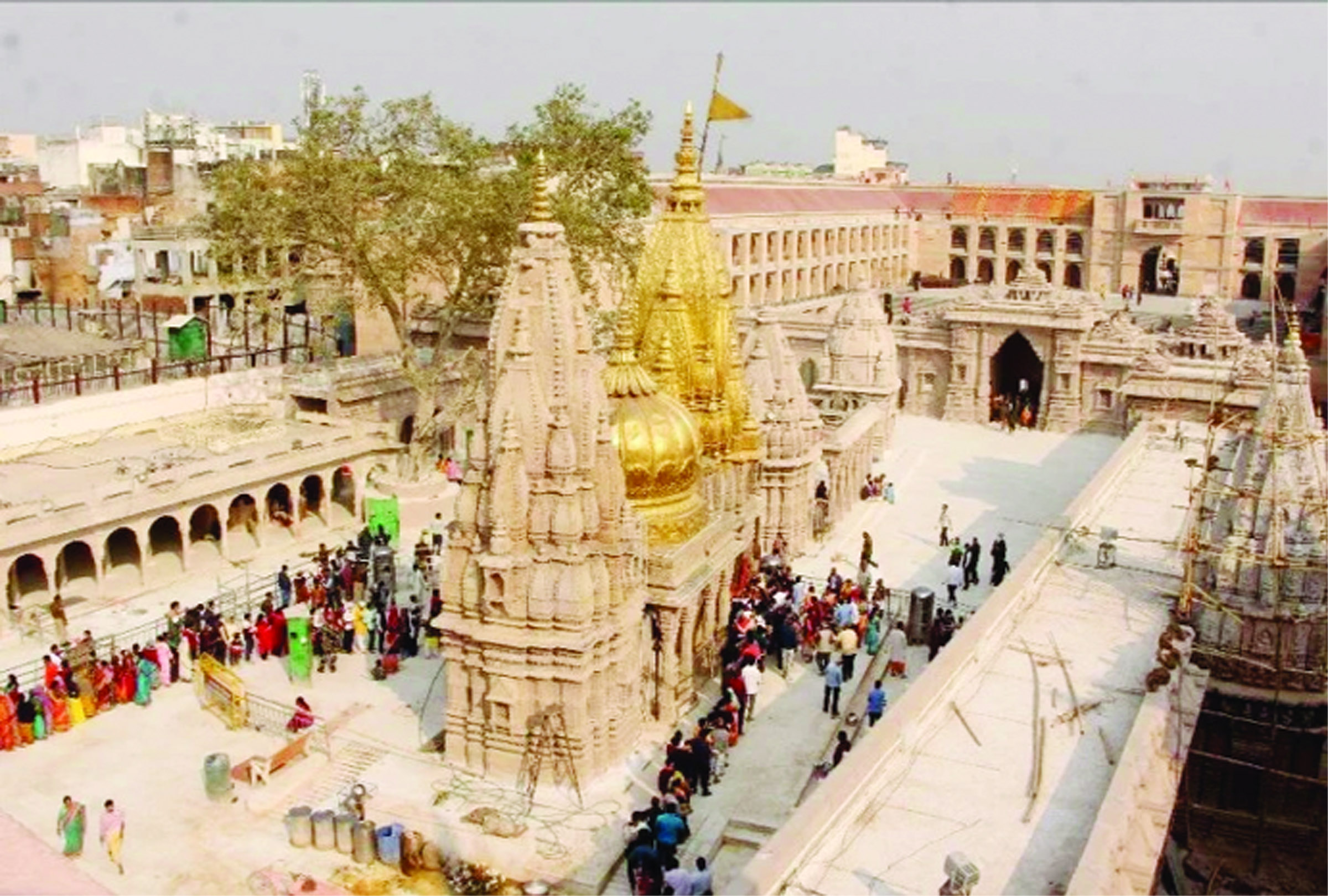Tarun Chugh
The Indian civilization which is also known as Sanatan Parmpara is among the oldest civilizations in the world. Pauranic legends say the oldest city of the universe is Varanasi, also known as Banaras or Kashi. Every Hindu aspires to go on a pilgrimage to Kashi at least once in his lifetime and also wishes to breathe his last there.
It is practically the spiritual capital of India and is one among the Saptpuris, one among 12 Jyotirlingas, one of the 52 Shakti-Peeth and one among the Tristhali.
Kashi is said to have been founded on the Trident of Lord Shiva and anyone who dies here gets Moksha.
The main deity is known by the names Shri Vishwanath and Vishweshwara literally meaning Lord of the Universe. Varanasi city was called Kashi in ancient times, and hence the temple is popularly called Kashi Vishwanath Temple. Kashi in fact is a land of Lord Shiva. Located on the banks of river Ganga, this city has attracted seers and seekers, tourists and wanderers, alike from time immemorial.
It is as a tribute to the holy city that Prime Minister Narendra Modi conceived the Kashi Vishwanath Corridor Project and laid its foundation stone in March 2019.
As an ardent devotee of Lord Shiva and the Indian culture, the prime minister took upon himself the near-impossible task of reviving the lost glory of this divine city. In fact, it is not just the beautification and cleanliness of the city, the project is aimed at the cultural revival of India’s rich heritage and traditions represented by temple cities like this.
Features of the Project:
Kashi is known for two things- Temple and Ghats. The main aim of the project was to connect these two things- The Kashi Vishwanath Temple and the Ganga river. The project connects the temple with the ghats, with a paved walkway.
Area-wise it is one of the biggest temple corridor projects in India. The corridor is built over 5.5 lakh square feet. The project aims to increase the total area of the Temple to around 50,000 square meters.
The peoples of Kashi were made part of this project and they were urged to give their land for the project. Over 300 buildings adjoining the temple were purchased to create the space for the project. They were given the market value of their properties.
The main temple was earlier surrounded by buildings on three sides, the corridor has decongested the temple complex.
The construction and dig-up have led to the recovery of at least 40 ancient temples. There is no tinkering or tampering with the original structure of the Kashi Vishwanath Temple. Without compromising the originality of the ancient structure, the beauty, splendour and magnificence of Kashi have been enhanced.
The Project aims at making this corridor a centre for religious-cultural tourism. The work includes the construction of Temple Chowk, Varanasi city gallery, multipurpose auditoriums, halls, museum, devotee facilitation centre, public convenience, salvation home, Godowlia gate, Bhogshala, shelter for priests and sevadars, spiritual book space etc. The other facilities include an over 7,000 square meter temple platform for meditation for 10,000 people, seven grand entrance gates, a cafeteria, a food court, a Vedic and spiritual library, a virtual gallery, A special sky beam light system is also installed along the corridor.
To protect the ecology and environment, about 70% of the 5.50 lakh sqft area of the project is kept open for the green cover. Nearly .1,000 crores have been spent on the entire project, which includes .70 crores spent on the rehabilitation of people living in the redeveloped area.
To make it a true religious-cultural event, the inauguration would see the presence of the main acharya’s of the 12 Jyotirlingas, with water from all major rivers of the country being brought in for the Abhishek of the main deity Baba Vishwanath (Lord Shiva). India is primarily a religious-spiritual civilization and country. It will boost not only domestic tourism but will also attract worldwide spiritual tourism which is India’s strong point. The revival of our cultural heritage like this will not only enhance tourism potential and tourist economy but will also help in the spread of Indian culture in a better way.
(The author is National General Secretary Bhartiya Janta Party)
Trending Now
E-Paper


